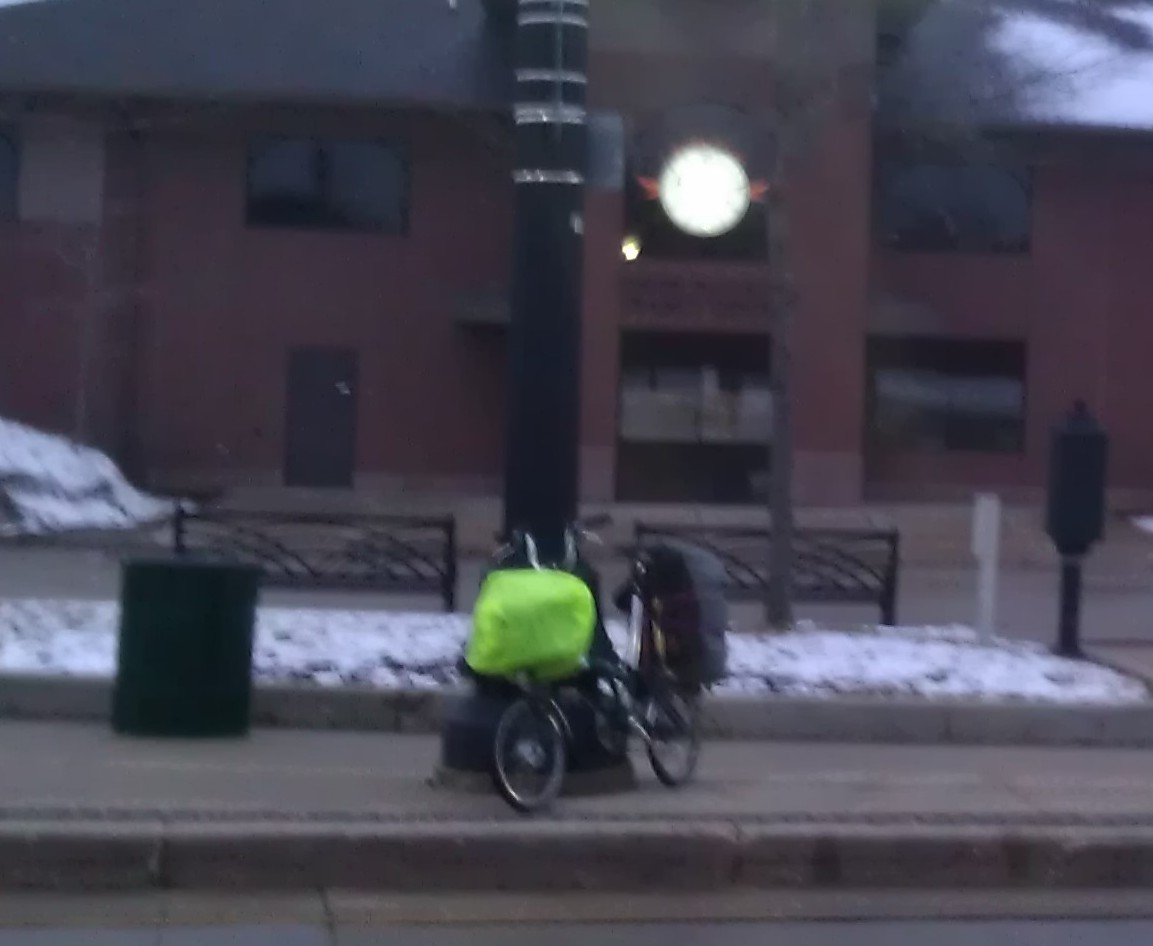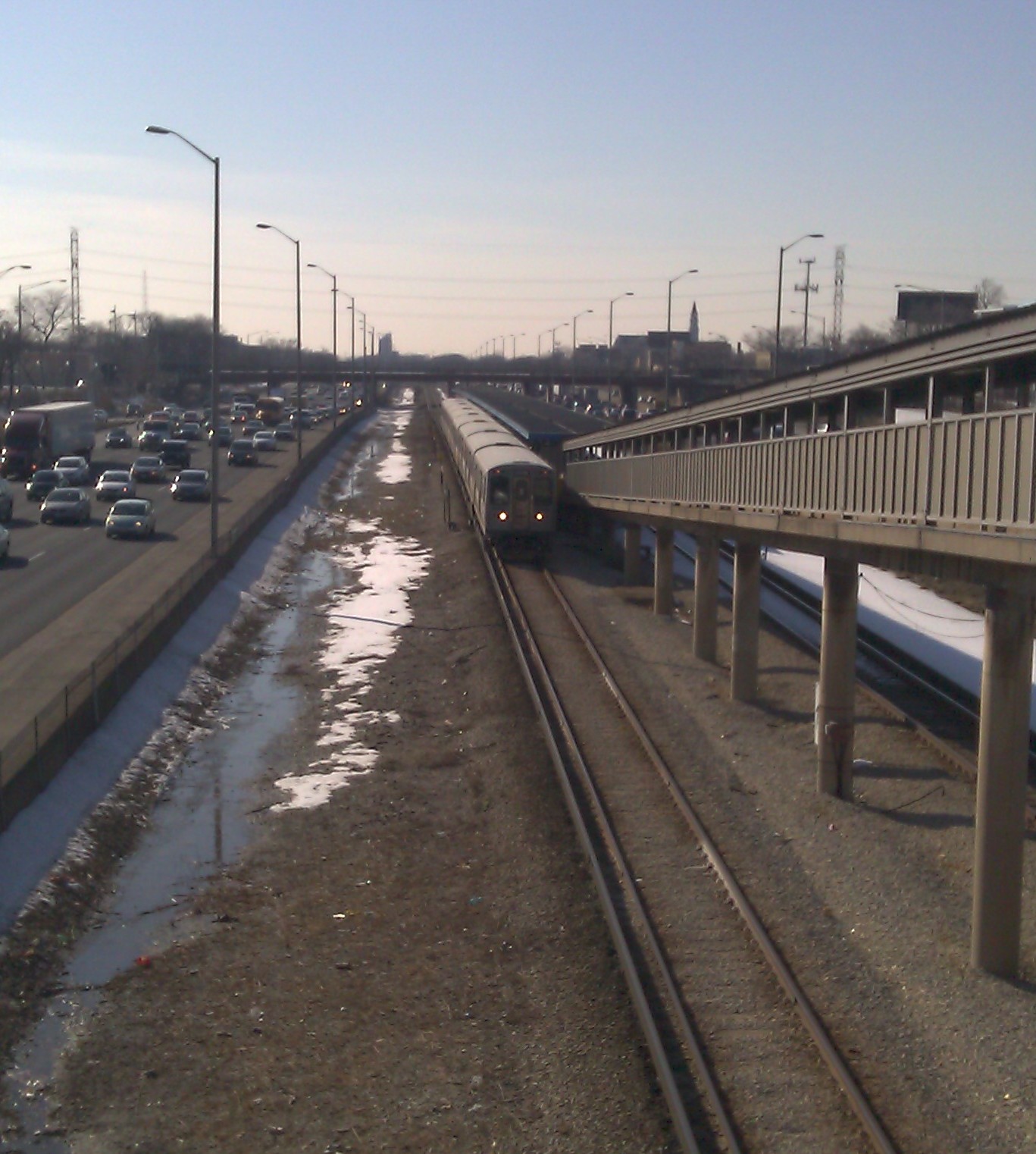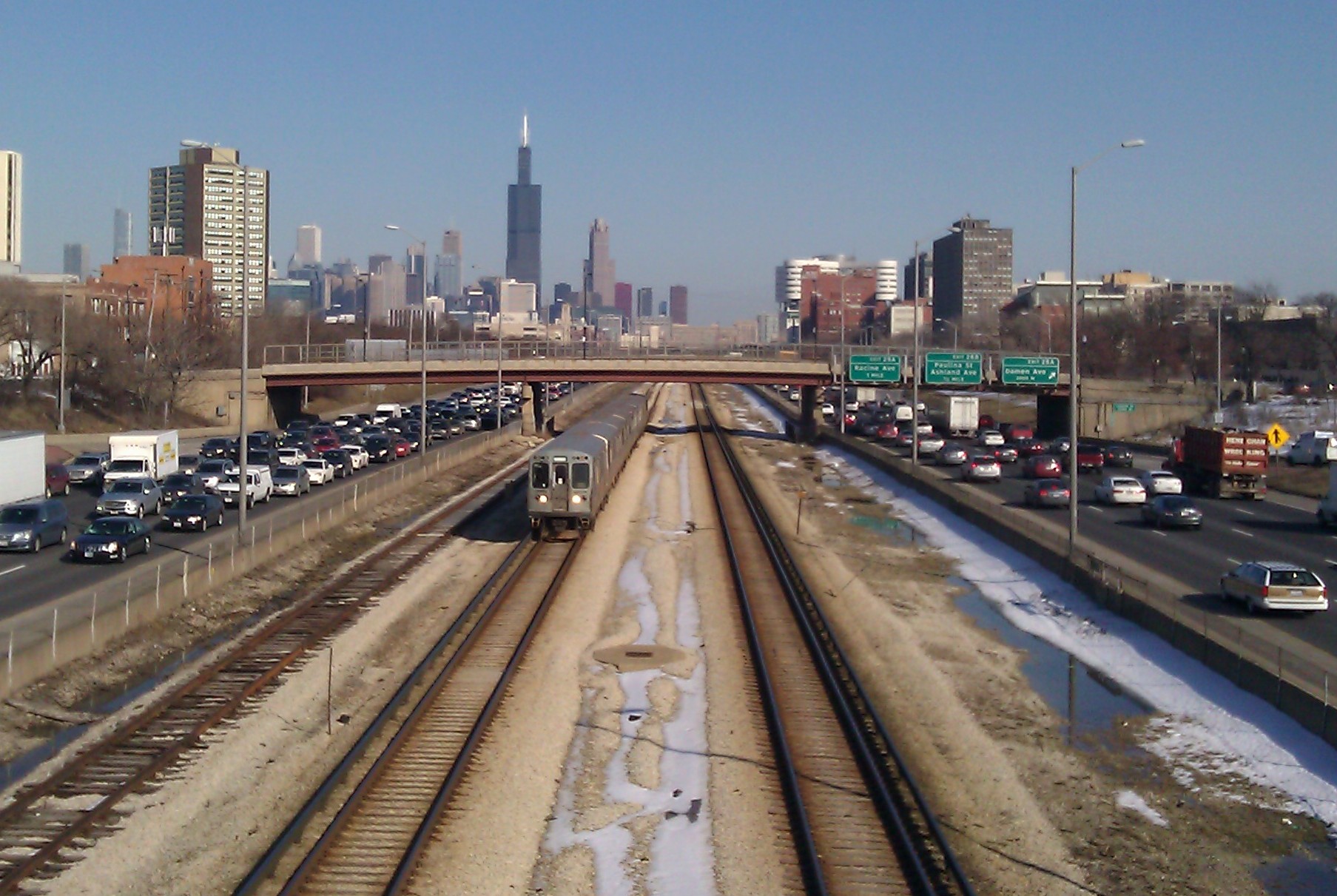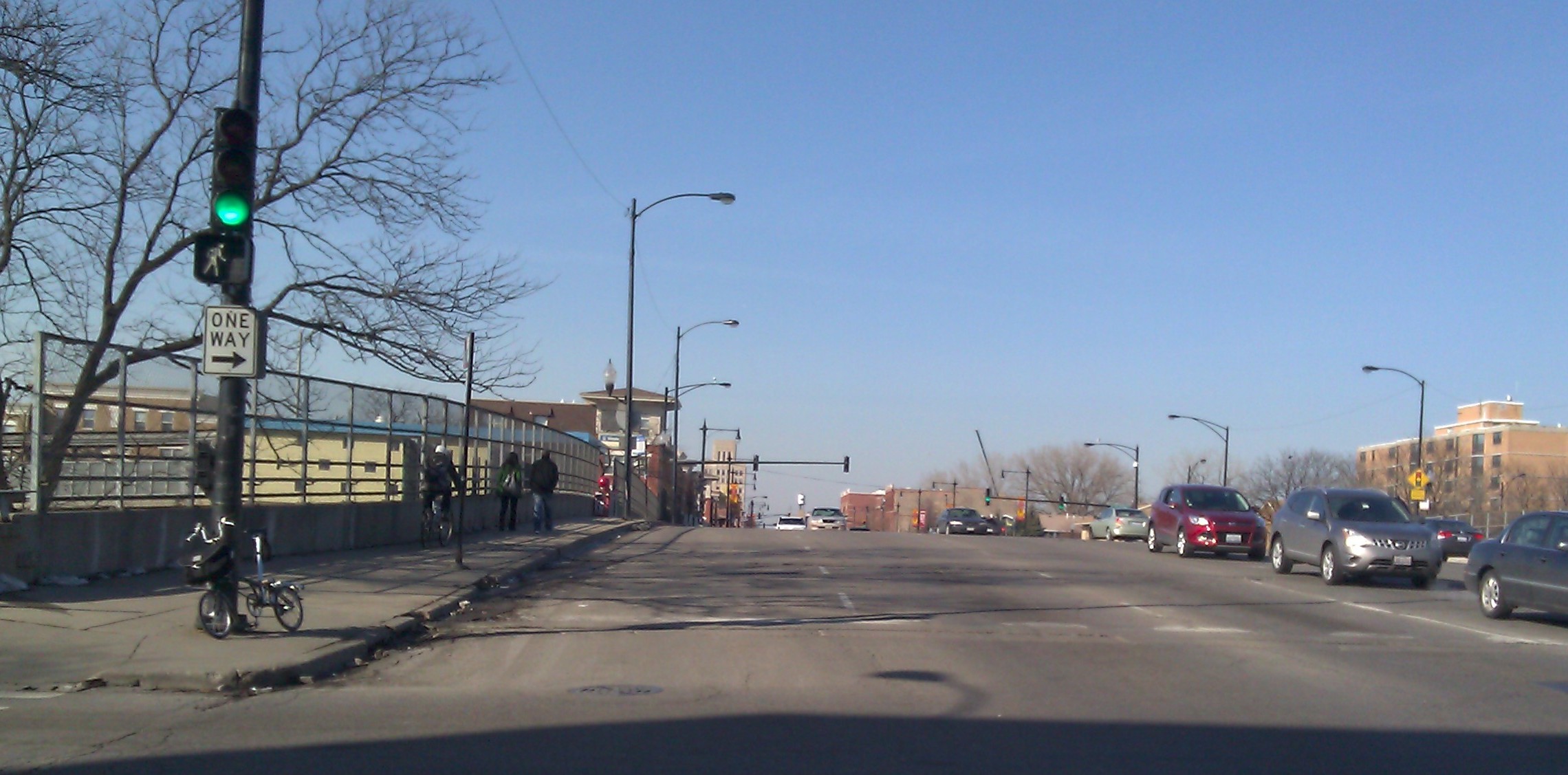It's been an interesting week here in Milwaukee. The empty streets reflected the bitter cold earlier this week but by now more people are out and the weather is showing signs of spring. Still, it feels like a small city and is much less dense than than I expected a city of 600,000 people to be. When everyone came out of hiding from the cold I could tell that most people drive private cars -- in fact, census data shows that only 4 percent of commute trips are made by transit, and less than 1 percent by bike -- yet I found it easy to get around without a car.
Bikes
The city owes a lot of its success to the many breweries, and that's reflected in the thriving bike culture, with a wide variety of simple, utilitarian bicycles. Bike lanes exist on many streets but Milwaukee would be so much better to bike in if the pavement condition were improved. Many streets are surfaced with concrete, which holds up well to stress from heavy vehicles but fails miserably with the freeze-thaw cycles.
While there are several pleasant and useful bike paths, winter maintenance continues to be a problem, with many trails at least partly covered with snow and ice. It is possible to ride most of the Oak Leaf Trail along Lake Michigan and north or south from downtown (minus the ice rinks), the Hank Aaron State Trail west (continuing some 80 miles to Madison once snow melts), and the scenic and flat Riverwalk along the Milwaukee River. Lakeshore State Park is the only state park in a Wisconsin city; it's a nice place to relax even if it is separated from the city (as in most cities) by an underused highway.
The many bridges offer great views of the Milwaukee River valley, and the Riverwalk abuts many new apartment buildings. Not to be missed is the Marsupial Bridge, constructed in 2006 directly under the deck of an existing bridge, exclusively for pedestrians, bikes and other non-motorized vehicles. Aside from the pleasant ride, it's footprint is a reminder of how space-efficient bikes is compared to the cars above.
I had the pleasure of interviewing the Wisconsin Bike Federation staff as well as the director of the Vulture Space community bike shop; you can listen to those on separate podcast episodes this week.
Local Transit
Bus service in Milwaukee is provided by the Milwaukee County Transit System. Most lines run along Wisconsin Avenue through the downtown area (known as Westown and Easttown on either side of the river). That's the main street and although it's overly wide and not really pedestrian friendly, it is nice to be able to board any bus within a few minutes at most times for a short ride east or west. Many bus routes go all the way east (across a highway from the lake) and terminate at the Downtown Transit Center, so isolated and depressing that passengers just transfer along Wisconsin Avenue. The county is trying to sell it to a developer, and if successful it should use the proceeds to remove a lot of the excess road space and create linear parks with street furniture and amenities.
In recent years MCTS upgraded three routes to crosstown limited-stop services (Red, Green & Blue Lines) which have no traffic priority measures but seem to be well used. They recently released an excellent mobile web site. But their best feature: after paying the fare you may request a free transfer which can be used as many times as you wish, even on the same route, for up to one hour. I've been a big proponent of this kind of policy since I first saw it in San Francisco as it allows people to use transit however it works best for them -- need to make a quick stop? forgot something? change of plans? maybe your child needs a bathroom break? -- but here it has become a political issue. A proposal to eliminate free transfers to combat perceived fare evasion (passengers selling transfers, though probably not as often as perceived) was recently rejected by the county as MCTS plans to implement an automated fare collection system using contactless smart cards later this year.
Like other county services, MCTS has been subjected to large service cuts and fare increases in recent years as the car-obsessed Republican Scott Walker -- who says we can't afford transit but always finds new money for highways -- was the County Executive here before becoming the Governor of Wisconsin.
The light traffic on city streets means that buses run well since there's not much to delay them, but also that ridership is relatively low because there is no real incentive to take the bus instead of driving. This is also evident in the very light foot traffic on most streets. The downtown is full of car parking garages and the east-west freeway cuts off the downtown just a few blocks south of Wisconsin Avenue.
Intercity & Regional Transit
Southeastern Wisconsin has a patchwork of transit services which connect in a somewhat complicated way. The cities - Milwaukee, Waukesha, Racine, Kenosha - each operate their own transit systems. MCTS Route 10 connects to Waukesha Metro Route 1 at a shopping mall in the midway town of Brookfield. The other links are provided by the subsidized Wisconsin Coach route from Milwaukee to Racine and Kenosha, for which a maximum fare is $4.50 is charged. You can transfer at Kenosha for one of a handful of daily Metra trains south to Chicago.
The new Milwaukee Intermodal Station provides access to Amtrak trains to Chicago, including the daily Empire Builder train to Minneapolis and all the way to the west coast, as well as intercity buses in all directions. Like many such facilities, it is close to downtown but not right there.
On Monday I will take the Badger Bus - the only regular scheduled intercity bus that doesn't stop at the Intermodal Station - to Madison for a few days before taking another bus to La Crosse, where I'll start riding along the Mississippi River toward Minneapolis.










